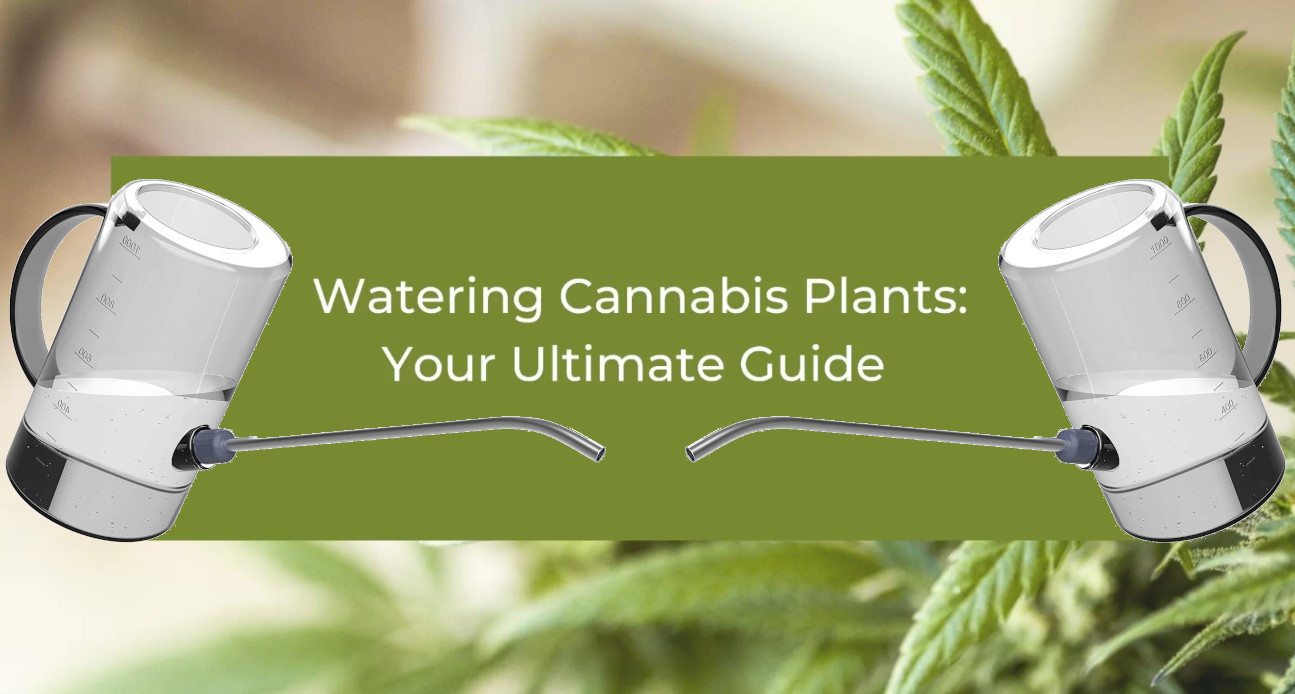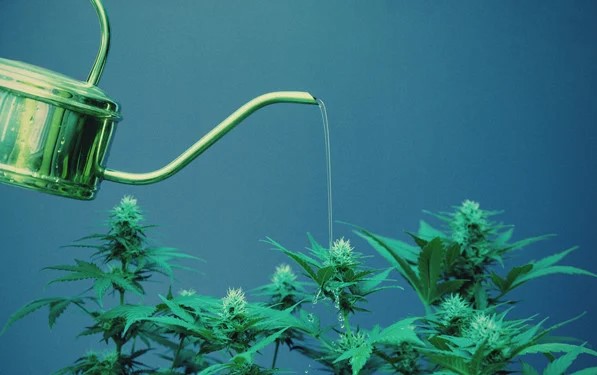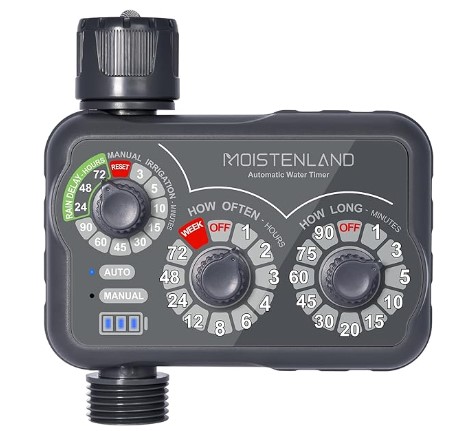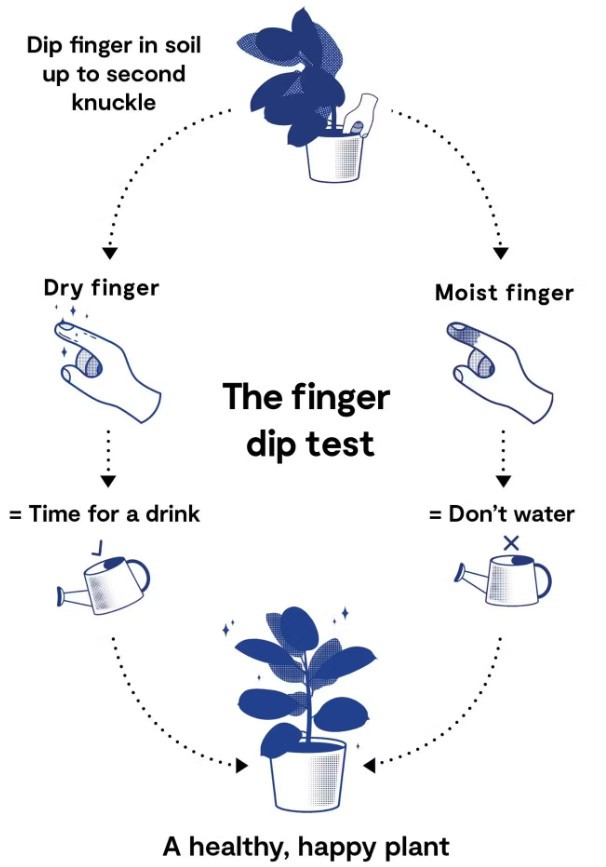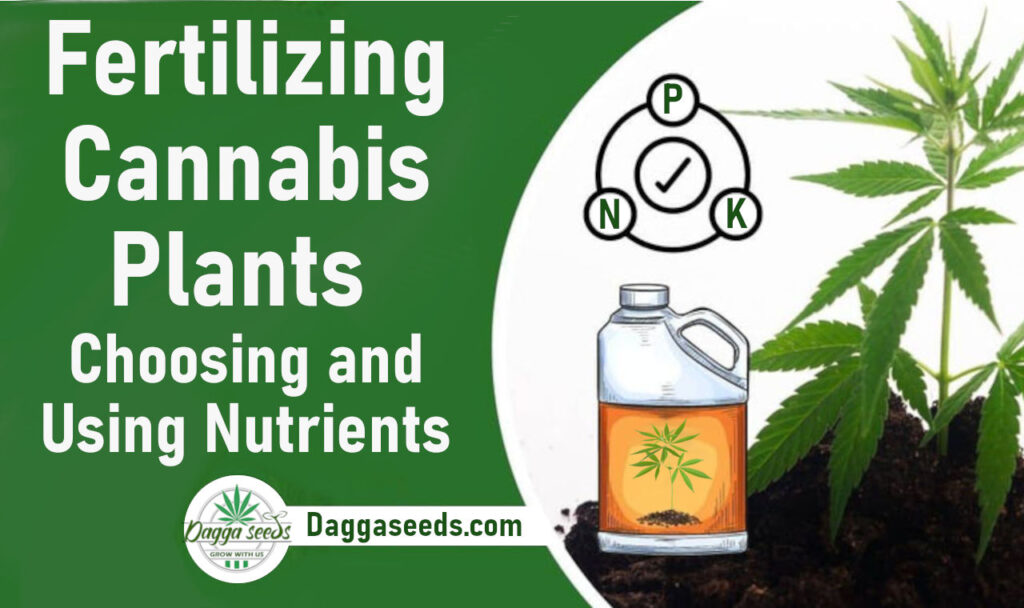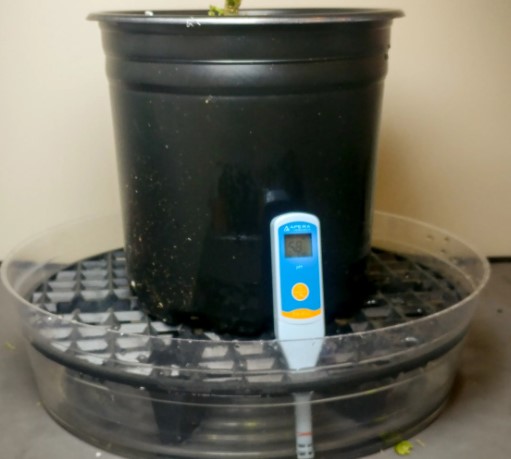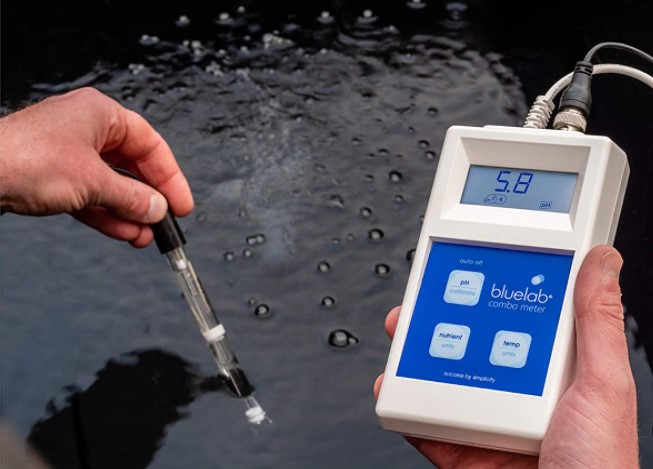Cultivating weed plants successfully demands meticulous attention to their water needs. Watering weed plants is a pivotal aspect of cannabis cultivation, wielding a significant impact on both plant health and yield. Improper watering stands as one of the most common culprits behind issues in cannabis plants, ranging from nutrient deficiencies and diseases to stunted growth. In this comprehensive guide, we will explore the essential aspects of how to water weed plants, covering the quantity of water they need, the optimal timing for watering, effective watering methods, and strategies for ensuring the right water quality. By following these guidelines, you can nurture healthy and thriving weed plants.
Table of Contents
Understanding the Role of Water in Cannabis Growth
How Much to Water Weed Plants?
Best Time to Water Weed Plants
How to Water Weed Plants
Combining Water and Nutrients for Optimal Cannabis Growth
How to Determine Water Runoff
Ensuring the Right Water Quality for Cannabis
Common Watering Mistakes to Avoid
Conclusion
Understanding the Role of Water in Cannabis Growth
Water is essential for the survival and growth of weed plants, as it is involved in various biological processes. Let’s take a closer look at how water impacts different parts of the plant:
Roots
The roots of a weed plant rely on water to extract vital nutrients from the soil. Water acts as a carrier, allowing these nutrients to circulate throughout the entire plant. Proper watering ensures that the roots have access to the nutrients they need for healthy growth.
Photosynthesis
Water is a key component in the process of photosynthesis, where marijuana plants convert light into energy. During photosynthesis, water molecules are split, releasing oxygen and hydrogen. The hydrogen is then used to convert carbon dioxide into glucose, providing the plant with energy.
Structural Support
Water plays a crucial role in maintaining the structural integrity of cannabis plants. It fills the cell wall, protecting the cellular membrane and allowing the plant to grow strong and support itself.
Temperature Regulation
Water helps regulate the temperature of cannabis plants, especially during hot weather. It allows the plant to fight dehydration and wilting, ensuring its survival even in high temperatures.
Overall Composition
It’s worth noting that the cannabis plant is composed mostly of water. Approximately 80% of the plant’s total composition is water, highlighting its importance for overall plant health and functioning.
How Much to Water Weed Plants?
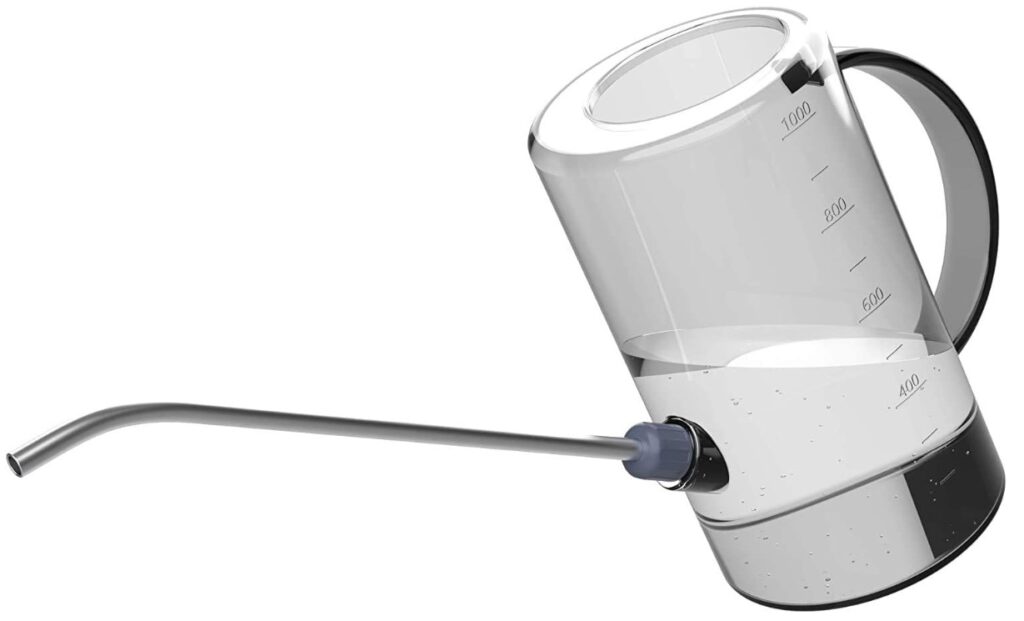
Understanding the water requirements of cannabis plants is crucial for providing them with the optimal amount of hydration. Cannabis is considered a high-use water plant, especially when grown outdoors. Research suggests that during the growing season, which typically spans from June to October, cannabis plants consume around 22.7 liters (or 6 gallons) of water per day. Indoor cannabis cultivation, on the other hand, may require only 2.5-2.8 gallons of water per day per plant towards the end of the growing season.
The amount of water cannabis plants need can vary depending on several factors, including temperature, humidity, growth stage, growing medium, end use, and whether the crop is grown indoors or outdoors. In warm temperatures, cannabis plants tend to require more water, especially during the vegetative and blooming phases. Additionally, the type of growing medium, such as soil or hydroponic substrates, can affect water retention and drainage. It’s important to strike a balance between providing enough water and avoiding overwatering, which can lead to nutrient deficiencies and root rot.
Best time to Water Weed Plants
Timing is crucial when it comes to watering cannabis plants. It’s best to avoid watering them during the day when there is ample sunlight, as water evaporates quickly, reducing the plants’ uptake. The optimal times to water weed plants are early in the morning before the sun’s intensity increases or in the evening when the sun is setting. Watering during these periods allows the roots to retain water better at cooler temperatures. It’s best to avoid watering your weed plants with very cold water to prevent damaging the roots.
To determine the right time for watering, it’s essential to assess the moisture level of the soil. Wait until the soil starts to dry out before watering again, but avoid letting it completely dry out. Get familiar with how heavy the pot is after a watering and when its dry, this will assist you in deciding when it needs more hydration.You can also check the moisture level by using the finger test – inserting a finger into the soil to a depth of around 5 cm. If the soil feels dry at this depth, it’s time to water the plants. Monitoring the plants’ health and observing any signs of thirst, such as drooping leaves, can also indicate when watering is needed.
How to Water Weed Plants
Properly watering cannabis plants involves using the right technique to ensure even distribution and thorough soaking of the soil. There are several methods you can choose from, depending on the stage of growth and the growing environment. Here are some commonly used watering methods:
1. Spraying
Spraying is an effective method for watering young cannabis plants with delicate roots. It involves using a spray nozzle to gently mist the plants and the surrounding soil. This method prevents excessive water flow that could damage the seedlings. Spraying is particularly useful during the early stages of growth when the plants require less water.
2. Manual Watering
Manual watering is a commonly used method for providing water to cannabis plants. It involves using cans, bottles, or hoses to carefully pour water onto the soil around the plants. As the plants enter the vegetative stage and require more water, manual watering becomes more suitable. It’s important to distribute the water evenly and slowly to avoid excessive runoff.
3. Drip Irrigation
Drip irrigation is a highly efficient and automated method of watering cannabis plants. It involves using a network of pipes and drippers to deliver water directly to the plants’ root zones. Drip irrigation ensures precise water delivery and allows for better control over the amount and frequency of watering. This method is especially useful for larger-scale cultivation and can save water and labor in the long run.
When watering cannabis plants, it’s crucial to avoid excessive runoff, as it can lead to nutrient leaching and water wastage. Ensure that the water penetrates the soil thoroughly, reaching the plant’s root zone. Additionally, using a watering wand or a similar tool can help target the water directly at the base of the plants, avoiding unnecessary wetting of the foliage.
Combining Water and Nutrients for Optimal Cannabis Growth
In addition to mastering the art of proper watering, achieving optimal cannabis growth involves skillfully combining water and nutrients. This process ensures that your plants receive a well-balanced and nourishing solution, enhancing their overall health and maximizing yield.
1. Begin with Pristine Water:
Before introducing any nutrients, start with a clean water source, be it tap water, purified RO water, or another suitable option. The purity of your water sets the foundation for a nutrient solution that supports robust plant development.
2. pH Adjustment – First and Last Step:
It’s crucial to measure and adjust the pH of the water before adding any nutrients. This initial pH adjustment ensures that the water provides an optimal environment for nutrient absorption. After mixing in the nutrients, check and, if necessary, readjust the pH. This dual-step process ensures that the nutrient solution maintains the desired pH range crucial for nutrient availability to the plants.
3. Incorporating Cal Mag:
If utilizing Cal Mag (Calcium and Magnesium supplement), it’s advisable to introduce it to the water first. This step allows for the even distribution of these vital nutrients and prevents any premature interactions with subsequent additions.
4. Micro Nutrients – Precise and Controlled:
Following the introduction of Cal Mag, add micro nutrients individually. These include essential elements such as iron, zinc, copper, and manganese. Adding micro nutrients separately provides precise control over their concentrations, minimizing the risk of imbalances.
5. Macro Nutrients – N-P-K:
Next in line are the macro nutrients: nitrogen (N), phosphorus (P), and potassium (K). These nutrients are fundamental at different growth stages. Adding them one by one ensures optimal absorption and utilization by the cannabis plants.
6. Stir and Dissolve for Homogeneity:
Stir the nutrient solution thoroughly after each addition to facilitate proper dissolution. This step is critical for creating a homogeneous mix, preventing settling, and ensuring an even distribution of nutrients.
7. Check and Adjust EC Levels:
Measure the Electrical Conductivity (EC) levels to gauge the concentration of dissolved salts. Monitoring EC levels helps prevent over-fertilization, and adjustments can be made if necessary.
8. Watering with Precision:
Once the nutrient solution is well-mixed, and the pH and EC levels are confirmed within the desired ranges, it’s ready for application. Water your cannabis plants with this nutrient-enriched solution, ensuring comprehensive coverage of the root zone.
How to Determine Water Runoff
Collecting water runoff is an essential practice in cannabis cultivation as it provides valuable insights into plant health and nutrient balance. Water runoff refers to the excess water that drains out from the bottom of the containers or growing medium. By collecting and analyzing the runoff, you can assess the pH and nutrient levels in the soil and make any necessary adjustments.
To collect water runoff, place a saucer or tray under the container or growing medium. After watering, allow the excess water to drain out completely, and then carefully collect it in the saucer or tray. Use a pH and EC meter to measure the runoff’s pH and electrical conductivity (EC) levels. This information will help you determine whether the plants are receiving the proper nutrients and adjust your watering and feeding practices accordingly.
Ensuring the Right Water Quality for Cannabis
Water quality is a critical factor in cannabis cultivation, as it directly affects plant health and nutrient absorption. While cannabis can tolerate various water sources, including tap water, certain considerations should be taken into account to ensure optimal water quality. Here are some factors to consider:
1. pH Levels
Cannabis plants require water with specific pH levels to facilitate nutrient absorption. The ideal pH range for cannabis cultivation in soil is between 6 and 7, with 6.5 being the target pH. Water that is too acidic or alkaline can hinder nutrient uptake and result in nutrient deficiencies or toxicities. Use a pH meter to measure and adjust the water’s pH as needed, especially when adding nutrients to the plants.
2. Water Source
The source of water used for cannabis cultivation can impact the overall quality. Tap water, for example, may contain high levels of minerals, such as calcium, which can lead to limescale deposits on leaves and soil. To improve water quality, consider using purified RO (reverse osmosis) water, letting tap water sit out to eliminate chlorine, collecting rainfall, or using bottled water.
3. EC Levels
Electrical conductivity (EC) measures the level of salts or dissolved solids in the water. High EC levels can indicate the presence of excessive minerals or chemicals, which can be detrimental to cannabis plants. If the water’s EC levels are too high, consider diluting it with rain or RO water or letting it sit out for at least 24 hours to allow the EC levels to drop.
Monitoring and maintaining the water quality for cannabis cultivation is crucial for ensuring optimal nutrient absorption and preventing nutrient imbalances or deficiencies.
Common Watering Mistakes to Avoid
While understanding the proper watering techniques is essential, it’s equally important to be aware of common watering mistakes and how to avoid them. Here are some common mistakes to steer clear of:
1. Overwatering
Overwatering is one of the most common mistakes made by cannabis growers. It occurs when plants receive more water than they can effectively absorb or when the soil remains overly saturated for extended periods. Overwatering can lead to root rot, nutrient leaching, and reduced oxygen availability for the roots. To avoid overwatering, wait until the soil has dried out before watering again and ensure proper drainage.
2. Underwatering
Underwatering is another common mistake that can negatively impact cannabis plants. It occurs when plants do not receive enough water to meet their hydration needs. Underwatering can lead to stunted growth, wilting, and nutrient deficiencies. To prevent underwatering, monitor the moisture level of the soil and water the plants when the soil starts to dry out.
3. Inconsistent Watering
Inconsistent watering practices can disrupt the plant’s water uptake and nutrient absorption. Fluctuations between periods of drought and excessive watering can stress the plants and lead to nutrient imbalances. To maintain consistent watering, establish a watering schedule based on the plants’ needs and environmental conditions. Regularly monitor the soil moisture and adjust the watering frequency as necessary.
4. Watering at Inappropriate Times
Watering at inappropriate times, such as during the hottest part of the day, can lead to water loss through evaporation and reduced water uptake by the plants. It’s best to water early in the morning or in the evening when temperatures are cooler. This allows the water to penetrate the soil effectively and ensures optimal water absorption by the roots.
5. Neglecting Water Runoff
Neglecting to collect and analyze water runoff can result in nutrient imbalances and pH fluctuations. Water runoff provides valuable information about the plants’ nutrient uptake and can help identify any issues. Make it a practice to collect and measure the pH and EC levels of water runoff after each watering session to ensure proper nutrient management.
By avoiding these common watering mistakes and following proper watering practices, you can provide your cannabis plants with the optimal hydration they need to thrive.
Conclusion
Watering cannabis plants is a critical aspect of successful cultivation. By understanding the water requirements of cannabis, adopting appropriate watering techniques, and maintaining water quality, you can provide your plants with the necessary hydration for healthy growth and high yields. Remember to consider factors such as temperature, humidity, growth stage, and growing medium when determining the watering needs of your cannabis plants. Regularly monitor the moisture level of the soil, collect water runoff for analysis, and adjust your watering practices accordingly. With proper watering, you can cultivate thriving and vibrant cannabis plants.

